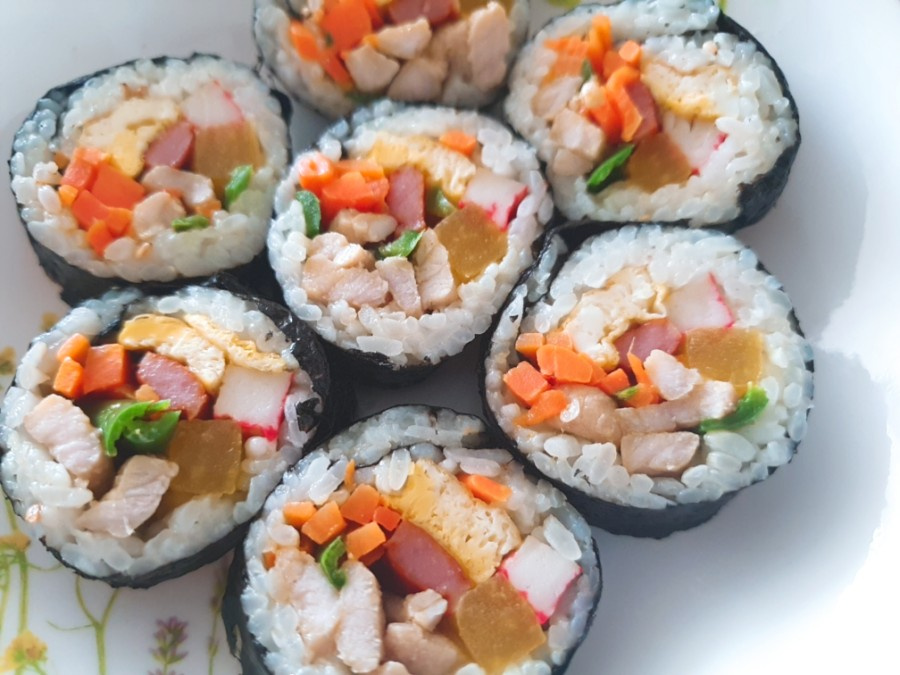
Making chili pepper kimbap! I made chili pepper kimbap!
I don't usually eat food with cheongyang pepper, but I suddenly wanted to eat it when I saw you eating it on TV Of course it would be convenient to buy and eat, but I thought it would be difficult to find the style I wanted, so I bought the ingredients myself and made it
4 serving
Within 30 minutes
츄츄맘
- Ingredients
-
-
Gimbap ingredients
-
instant rice
-
Pork200g
-
Cheongyang red pepper3ea
-
Oyster sauce1TS
-
thick soy sauce1TS
-
crushed garlic1/2TS
-
ground pepperlittle
-
cooking wine1TS
-
Sesame oillittle
-
Saltlittle
-
Carrot
-
Eggs4ea
-
- Cooking Steps
-
STEP 1/13Since I bought 200g of meat for japchae, I can make about 4 rolls of gimbap. Of course, the number of gimbap you can make depends on how much pork you put in the gimbap, right? I'm going to marinate the pork and stir-fry it Pork for japchae, 1 tablespoon oyster sauce
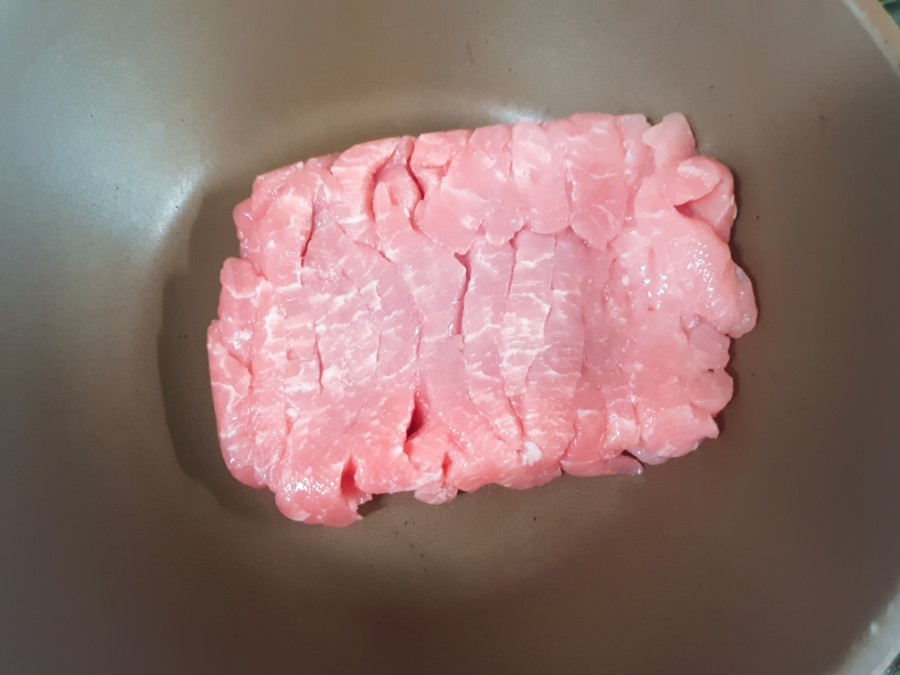
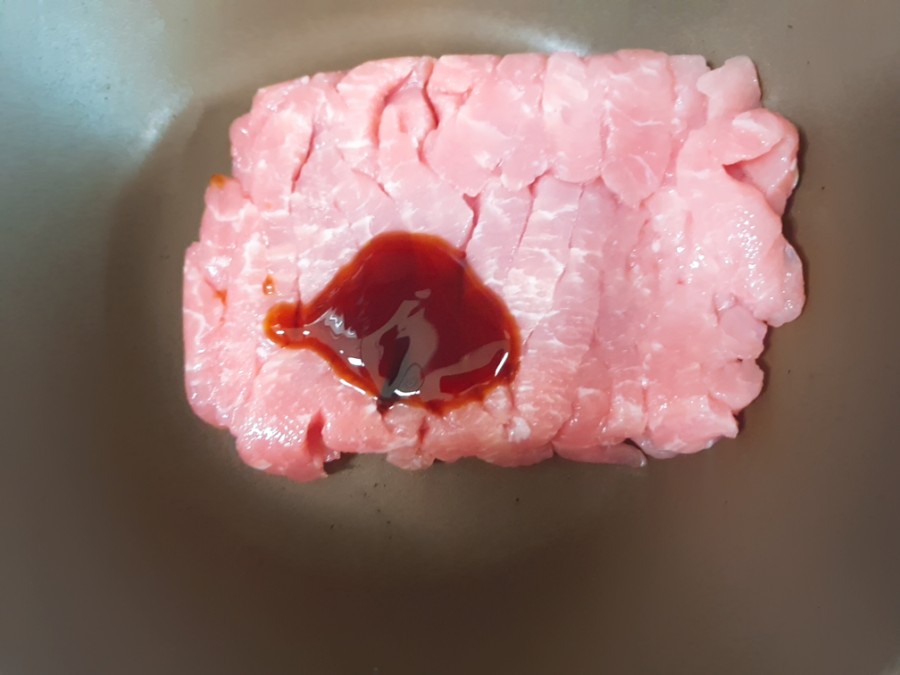 STEP 2/13Add 1 tablespoon of soy sauce, 1 tablespoon of cooking wine, and pepper, season and marinate beforehand While the pork is marinated
STEP 2/13Add 1 tablespoon of soy sauce, 1 tablespoon of cooking wine, and pepper, season and marinate beforehand While the pork is marinated
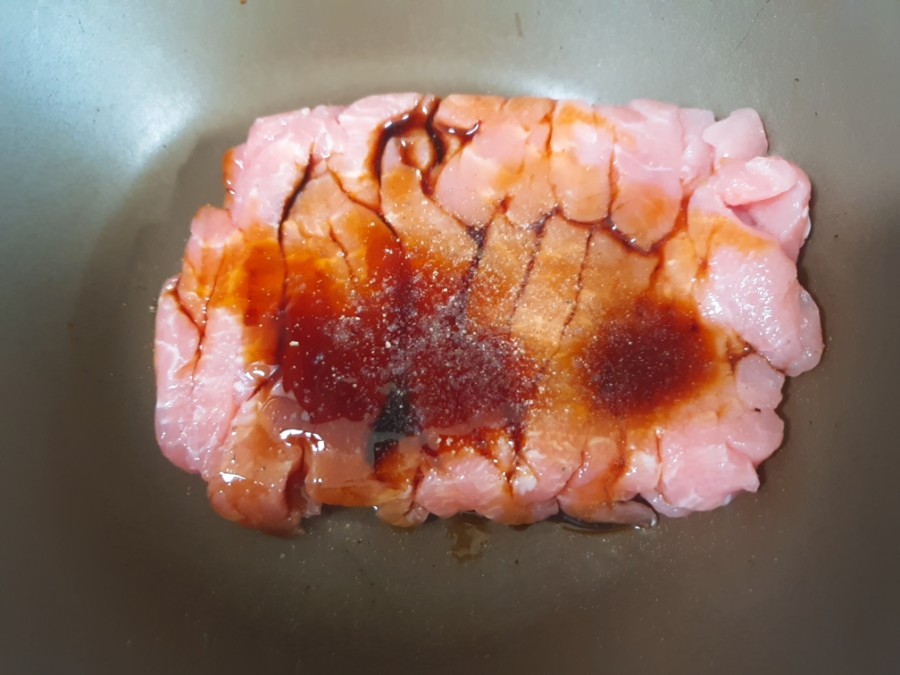 STEP 3/13I'm going to prepare the rest of the ingredients Chop the carrots, add cooking oil to the pan, and stir-fry them until they are cooked flexibly
STEP 3/13I'm going to prepare the rest of the ingredients Chop the carrots, add cooking oil to the pan, and stir-fry them until they are cooked flexibly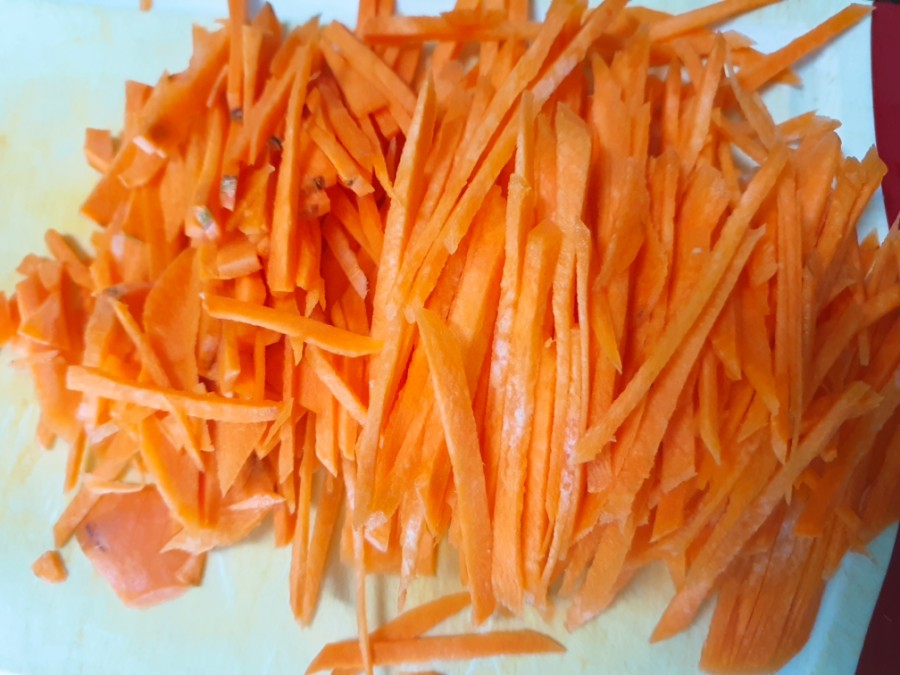
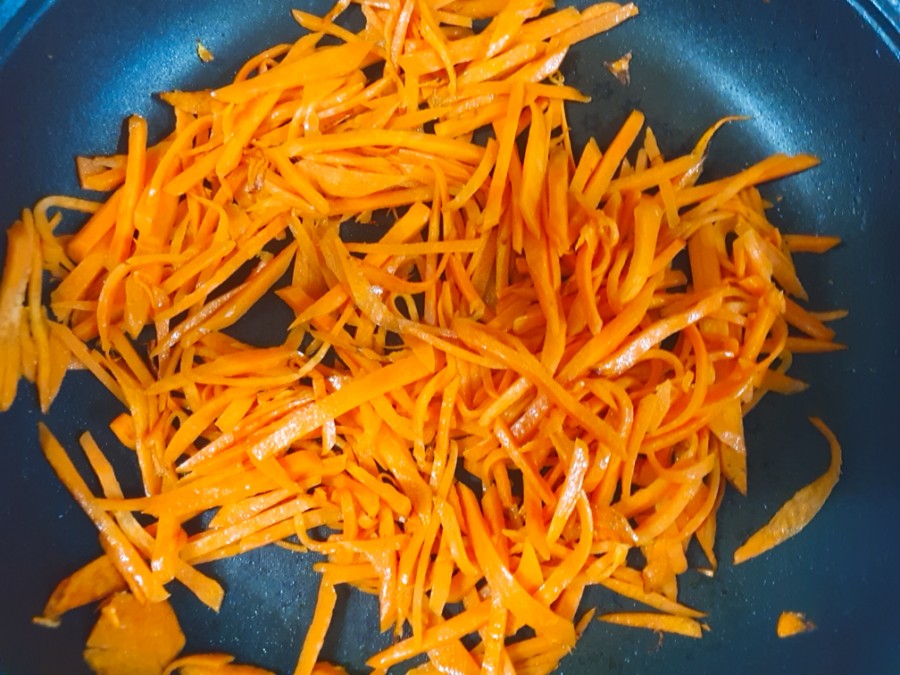 STEP 4/13Beat in 4 eggs, put oil on the pan, and fry it back and forth to make egg garnish
STEP 4/13Beat in 4 eggs, put oil on the pan, and fry it back and forth to make egg garnish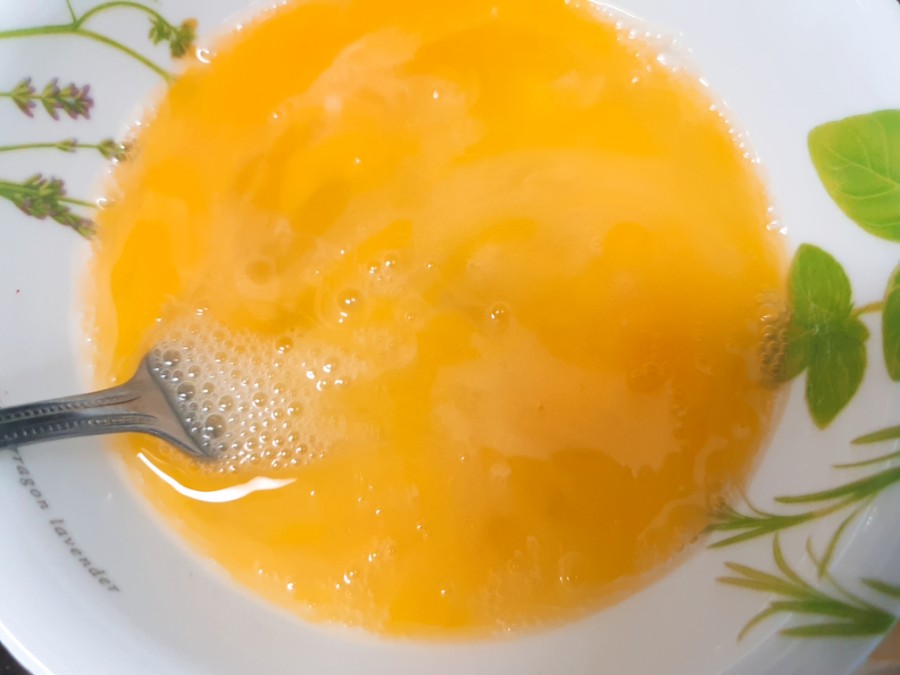
 STEP 5/13Cook the ham and crab meat in the kimbap set in an oiled pan
STEP 5/13Cook the ham and crab meat in the kimbap set in an oiled pan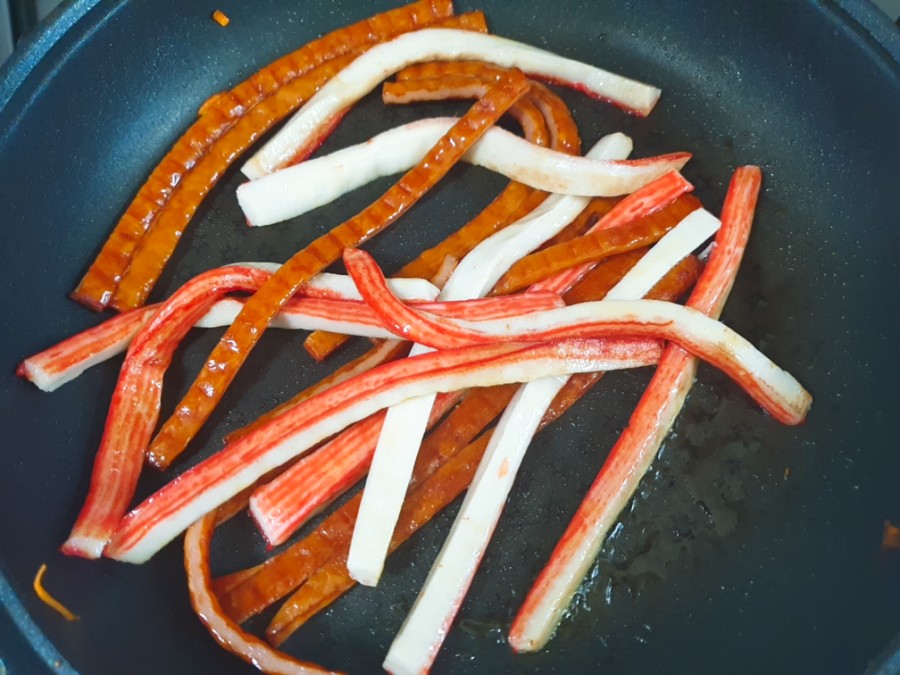
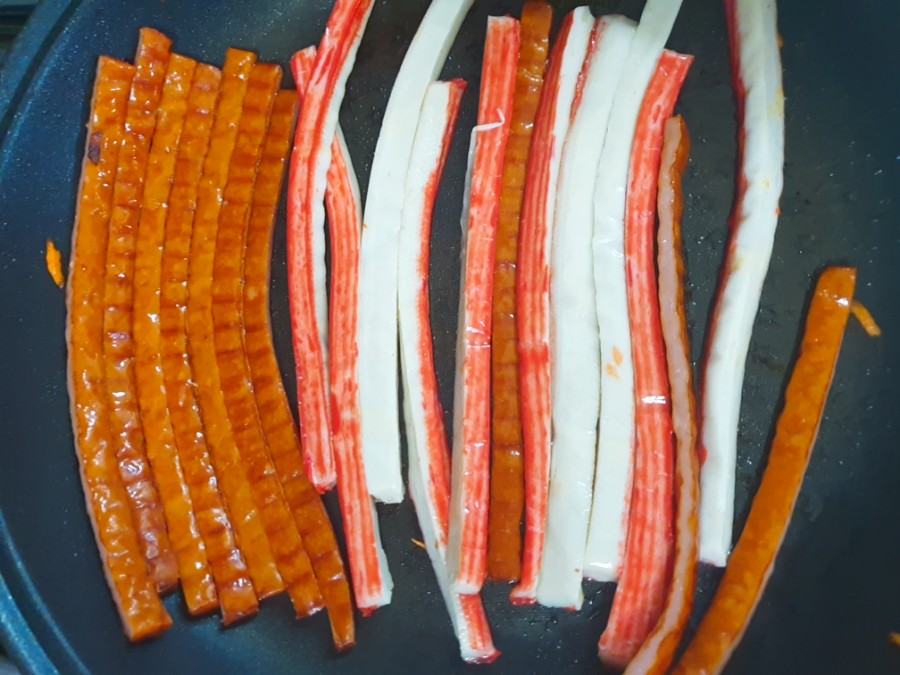 STEP 6/13If you do this, you're done preparing the ingredients except for the pork and hot pepper
STEP 6/13If you do this, you're done preparing the ingredients except for the pork and hot pepper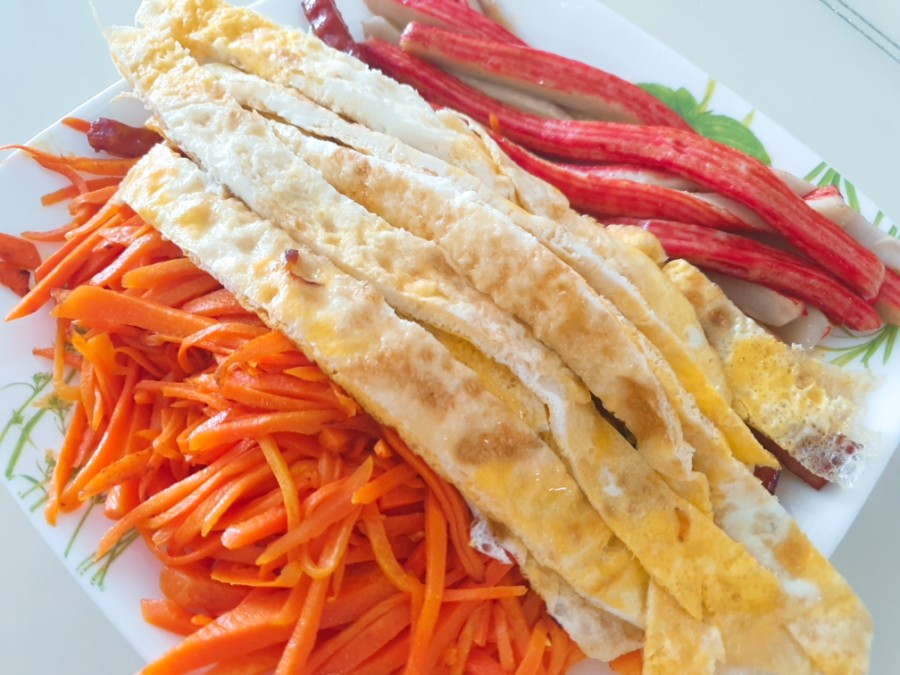 STEP 7/13<UNT_PHL> Next, I'm going to prepare the hot pepper Cut the peppers in half, remove all the seeds from the peppers, and chop them into long pieces
STEP 7/13<UNT_PHL> Next, I'm going to prepare the hot pepper Cut the peppers in half, remove all the seeds from the peppers, and chop them into long pieces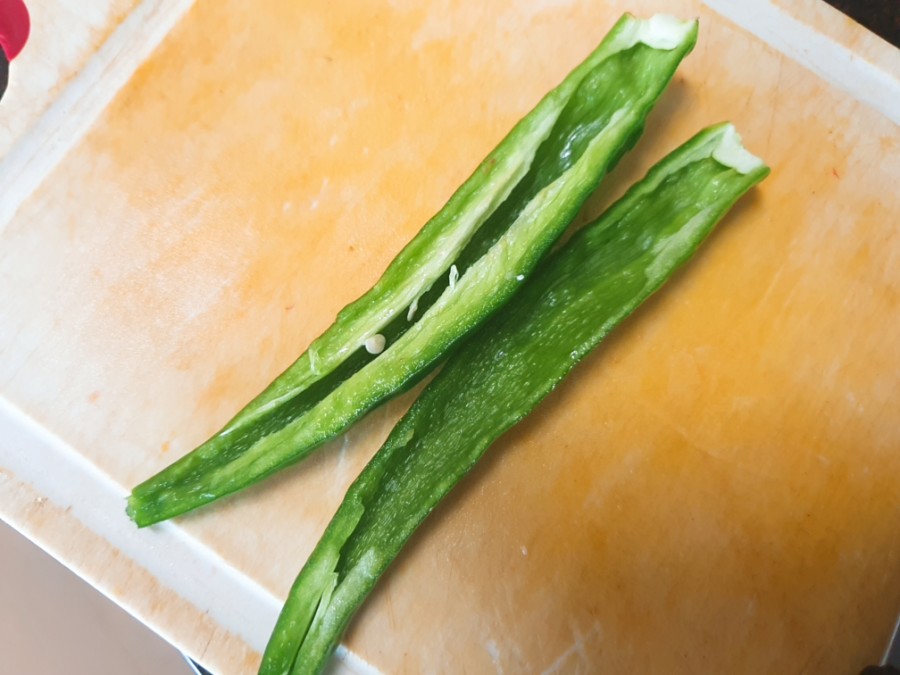
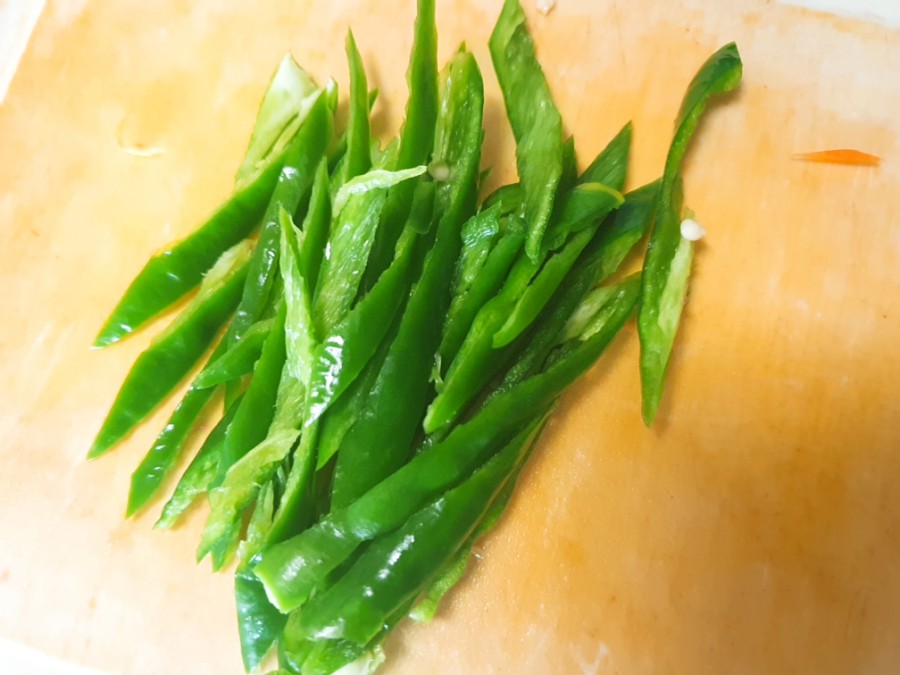 STEP 8/13Add cooking oil to the marinated pork and stir-fry it until it turns red
STEP 8/13Add cooking oil to the marinated pork and stir-fry it until it turns red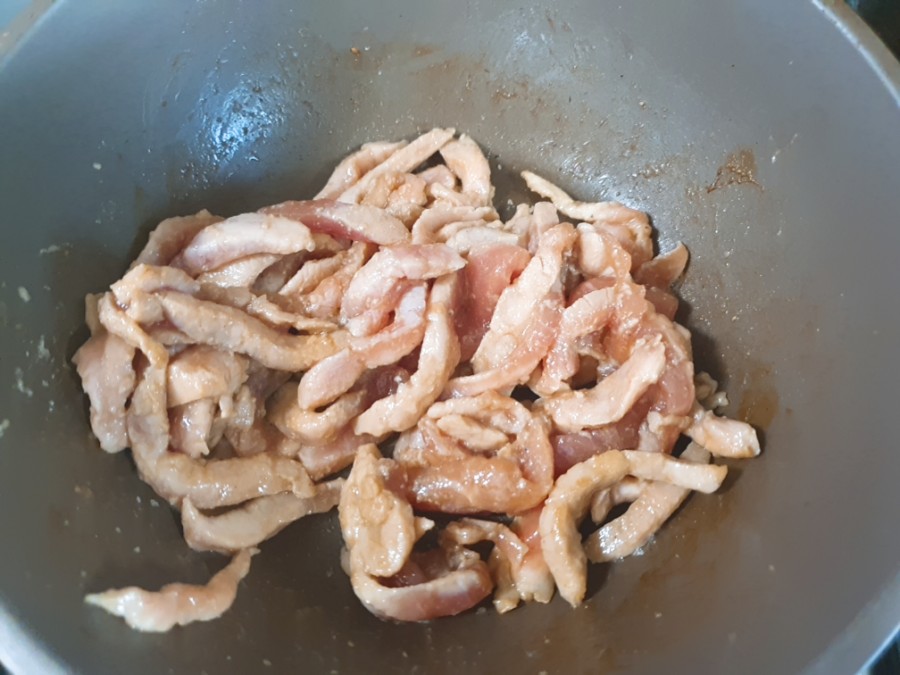 STEP 9/13If the color is gone, add 1/2 tablespoon of minced garlic, slice it, and stir-fry it until the meat is cooked
STEP 9/13If the color is gone, add 1/2 tablespoon of minced garlic, slice it, and stir-fry it until the meat is cooked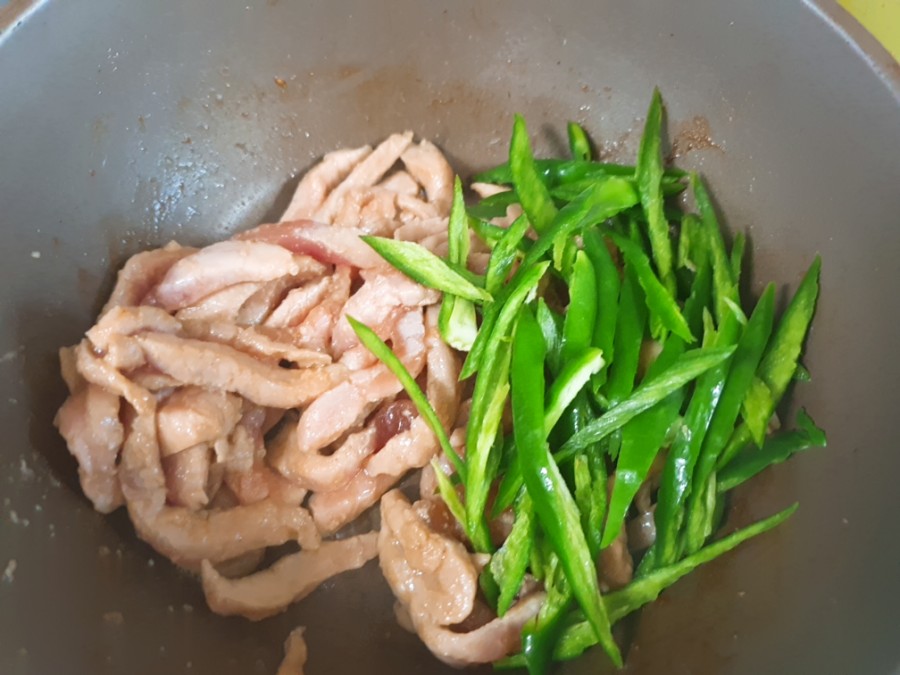
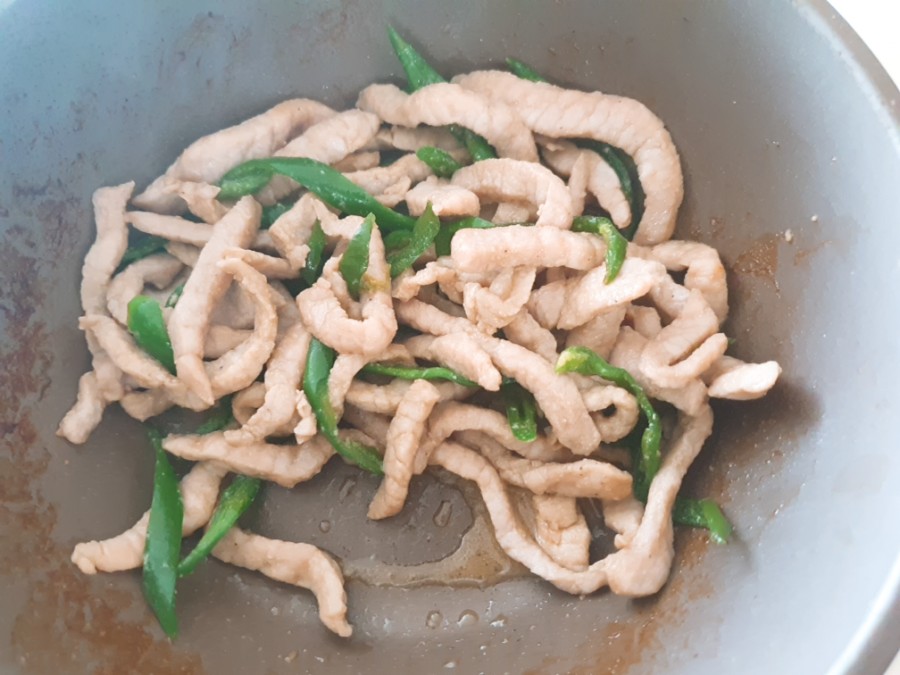 STEP 10/13Of course, rice should go into gimbap, right? Add sesame oil a few times and season with salt. Sprinkle sesame seeds and finish When the rice tastes salty, the seasoning is complete
STEP 10/13Of course, rice should go into gimbap, right? Add sesame oil a few times and season with salt. Sprinkle sesame seeds and finish When the rice tastes salty, the seasoning is complete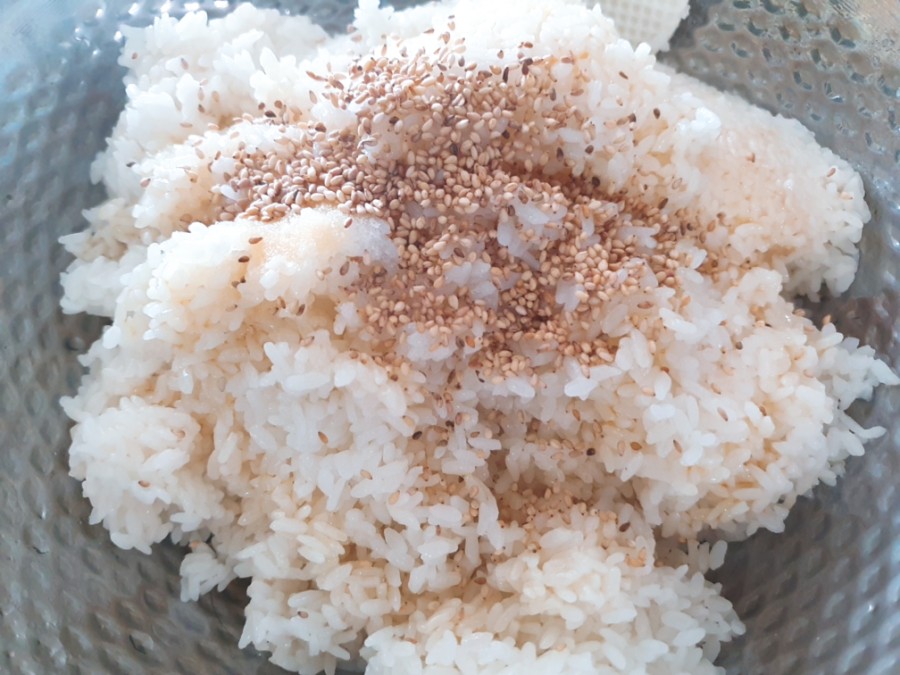 STEP 11/13Spread rice on a sheet of seaweed and put it on top
STEP 11/13Spread rice on a sheet of seaweed and put it on top STEP 12/13Add the prepared pork, cheongyang pepper, carrot, egg, ham, crab meat, and pickled radish and roll it
STEP 12/13Add the prepared pork, cheongyang pepper, carrot, egg, ham, crab meat, and pickled radish and roll it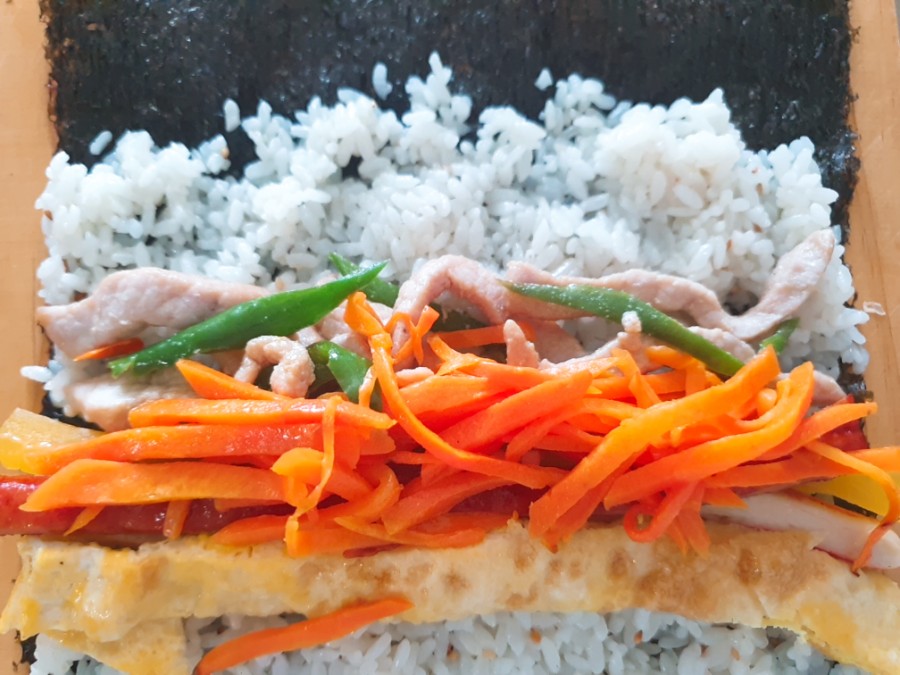 STEP 13/13If you cut the kimbap right after you roll it, the kimbap will be released, so if you wait until the moisture in the rice is delivered and the seaweed sticks well, the kimbap won't be released
STEP 13/13If you cut the kimbap right after you roll it, the kimbap will be released, so if you wait until the moisture in the rice is delivered and the seaweed sticks well, the kimbap won't be released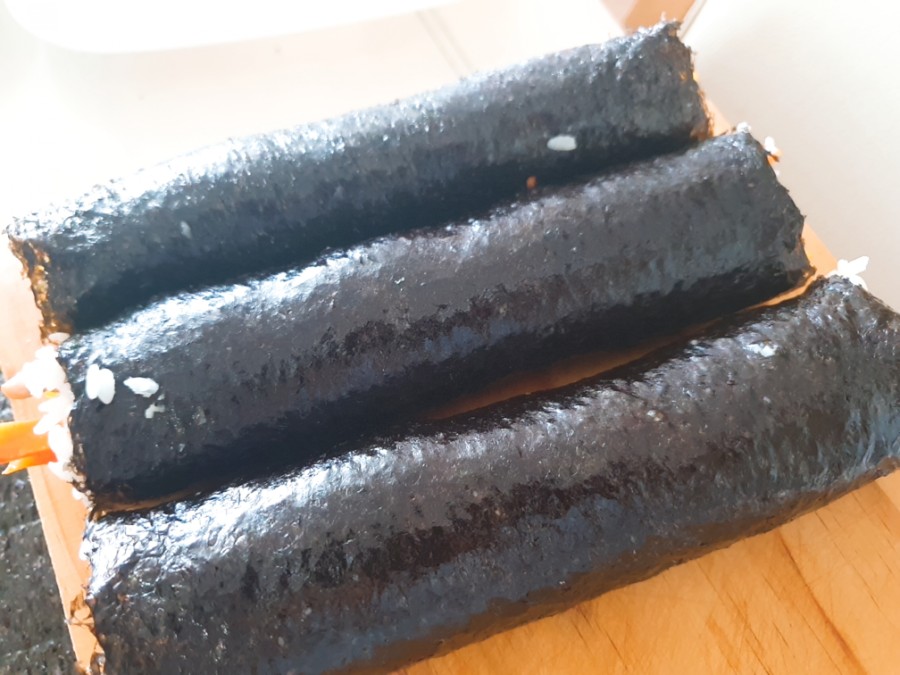
- Bibimbap Recommended recipe
-
-
1
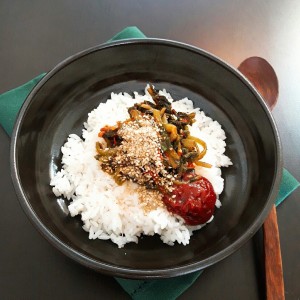 Young radish bibimbap, a simple meal5.00(10)
Young radish bibimbap, a simple meal5.00(10) -
2
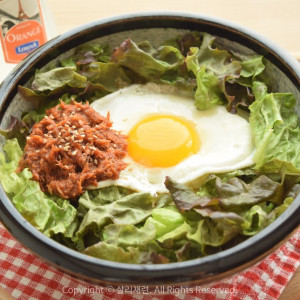 Lettuce bibimbap tastes great if you mix it with tuna ssamjang!4.95(86)
Lettuce bibimbap tastes great if you mix it with tuna ssamjang!4.95(86) -
3
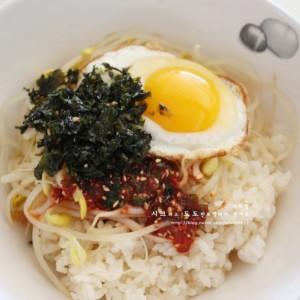 Making bean sprout bibimbap5.00(14)
Making bean sprout bibimbap5.00(14) -
4
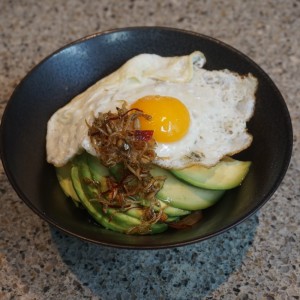 Cooking as I want @Avocado Bibimbap4.64(11)
Cooking as I want @Avocado Bibimbap4.64(11)
-
- stir-fried Rice Cake Recommended recipe
-
-
1
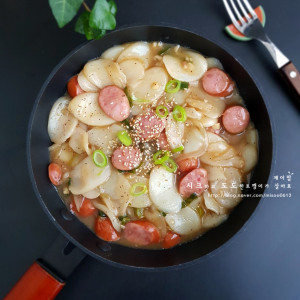 Sausage soy sauce tteokbokki. Tteokguk tteok. Soy sauce tteok4.92(200)
Sausage soy sauce tteokbokki. Tteokguk tteok. Soy sauce tteok4.92(200) -
2
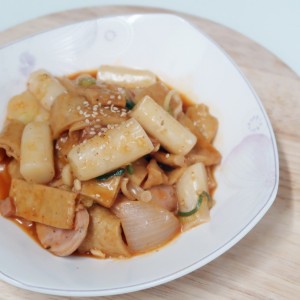 Ketchup tteokbokki. Making spicy tteokbokki. Eye snacks4.91(53)
Ketchup tteokbokki. Making spicy tteokbokki. Eye snacks4.91(53) -
3
 Shinjeon Tteokbokki Secret Recipe Simple Home Cooked Food4.89(28)
Shinjeon Tteokbokki Secret Recipe Simple Home Cooked Food4.89(28) -
4
 Golden recipe for tteokbokki. If you do it like this, you'll suc4.88(398)
Golden recipe for tteokbokki. If you do it like this, you'll suc4.88(398)
-